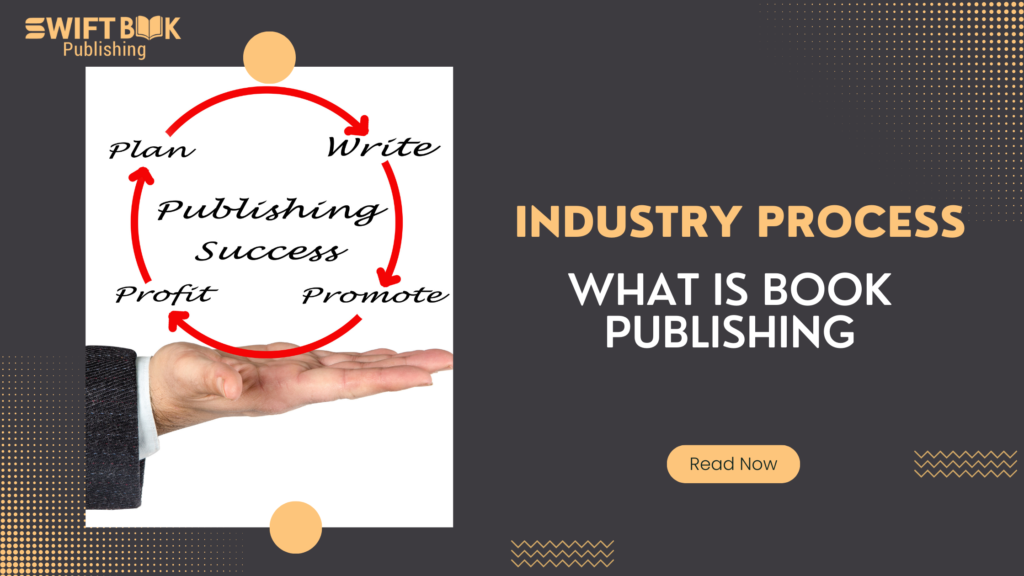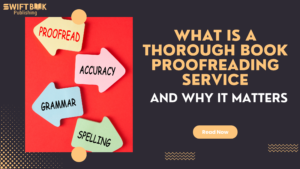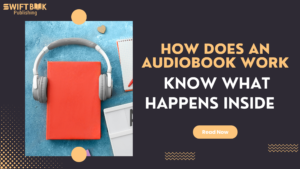Book publishing is the process by which a book is produced and made available to the public. This can encompass a range of activities from content creation, editing, and design to printing, distribution, and marketing. The goal of publishing is to facilitate the dissemination of knowledge, ideas, and entertainment. Published works can be fiction or non-fiction, spanning various genres and topics that cater to diverse audiences.
In traditional publishing, authors typically work with publishing houses that handle the heavy lifting of production and promotion. These publishers are often selective, choosing works they believe will succeed in the market. They invest their resources with the intention of turning a profit, covering costs through book sales. Contracts determine the rights, royalties, and responsibilities of each party involved.
Self-publishing offers an alternative route where authors take on the publishing responsibilities themselves or with the help of service companies. With advancements in technology, self-publishing has become more accessible, allowing for more creative control and potentially higher royalties for authors. However, this increased control also means greater responsibility for marketing and distribution, which can be formidable challenges for self-published authors.
Overview of Book Publishing
Book publishing is the process through which an author’s work is transformed into a marketable product and made available for sale to the public. The publishing industry encompasses a variety of publication types and involves several key stakeholders and processes.
Types of Publishing
- Traditional Publishing: This is where a publishing house selects a manuscript, invests in its editing, design, production, and marketing, and then distributes it, typically offering the author royalties.
- Self-Publishing: Authors opt to publish their work independently, taking on the financial risk and management of editing, design, marketing, and distribution themselves or with the help of hired professionals.
- E-Book Publishing: Electronic versions of books are published and distributed digitally, available to readers on various devices.
- Print-on-Demand: Books are printed individually as they are ordered, reducing the need for inventory storage and minimizing risk for self-published authors or small publishers.
The Role of Publishers
- Acquisitions: Publishers seek out and secure rights to manuscripts that have commercial potential and align with their publication goals.
- Development: This includes the editing and refinement of the manuscript, ensuring it meets industry standards and appeals to the intended audience.
- Production: In this phase, the physical creation of the book occurs, which encompasses design, typesetting, printing, and the binding of the book.
- Marketing and Sales: Publishers develop and execute marketing strategies to promote the book, secure book reviews, and manage sales and distribution to retailers and consumers.
The Publishing Process
The publishing process transforms a manuscript into a published book, involving several detailed and critical stages.

Manuscript Submission
Authors submit their manuscripts to a publishing house or literary agent. This submission generally follows specific guidelines outlined by the publisher, including format, length, and other requirements. Publishers then assess manuscripts for potential, which may involve a review by an editorial committee or acquisition editors.
Editing and Design
Once a manuscript is accepted, it enters the editing phase. Editors work with authors to improve the content’s clarity, coherence, and style. This stage may involve multiple revisions and can include:
- Content Editing: Checking for factual inaccuracies, inconsistencies, and ensuring overall content quality.
- Copyediting: Focuses on grammar, punctuation, and spelling errors.
- Design: Involves selecting fonts, formatting text, and arranging layout, as well as deciding on any illustrations or photography to be included.
Production
Production is the final stage where the book takes physical form. It includes:
- Typesetting: Applying the final text layout with the chosen design elements.
- Printing: Transferring digital text to a physical medium, usually paper.
- Binding: Attaching printed sheets together to form the book.
Also, during production, publishers manage other elements such as the choice of paper, cover material, and printing technique to ensure the finished product matches the intended quality and aesthetic.
Publishing Formats
Book publishing is available in several formats, catering to diverse audience preferences and reading habits. Each format offers unique production, distribution, and consumption methods.
Print Publishing
Print publishing involves the production of physical copies of books. Hardcover editions are bound with a rigid protective cover, while paperback versions feature a soft cover. These books are distributed through various channels, including bookstores, libraries, and online retailers.
E-Book Publishing
E-books are digital versions of books that readers can access on electronic devices. They are distributed through online platforms, where consumers can purchase and download them directly. Formats such as EPUB, PDF, and MOBI ensure compatibility with various e-readers, tablets, and smartphones.
Audiobook Publishing
Audiobooks are spoken-word versions of books, typically narrated by voice actors or the authors themselves. They are made available through CDs or digital downloads, and are accessible via audiobook platforms or apps like Audible and iTunes. Audiobooks allow multitasking and consuming literature without the need for visual engagement.
Marketing and Distribution

In the book publishing industry, a well-crafted marketing plan and an efficient distribution network are crucial for the success of a book. The right strategies ensure that a book reaches its target audience, while robust distribution channels make certain that the book is available where and when consumers want it.
Marketing Strategies
Publishers employ a variety of marketing strategies to promote books. They often begin with market research to identify the target audience for a specific book. Then, they tailor marketing campaigns to appeal to that demographic. Common approaches include:
- Social media campaigns: Utilizing platforms like Facebook, Twitter, and Instagram to reach potential readers.
- Author events: Scheduling book signings, author interviews, and public readings to generate excitement.
- Review copies: Send advance copies to reviewers, bloggers, and influencers to build buzz ahead of the release.
- Advertising: Investing in online and offline advertising, such as banners, search ads, or print media ads.
Effective marketing strategies are designed to boost visibility, generate interest, and drive sales for a book in the competitive market.
Distribution Channels
The reach of a book is defined by the breadth of its distribution channels. Publishers make books available across various platforms and outlets to maximize accessibility:
- Physical bookstores: Chain stores, independent bookshops, and specialty stores.
- Online retailers: E-commerce giants like Swift, as well as online storefronts of traditional bookstores.
- E-books and audiobooks: Digital distribution platforms such as Kindle, Apple Books, and Audible.
- Libraries and schools: Institutions that purchase copies for education and lending to the public.
Effective distribution channels are selected based on the book’s target market and reader preferences, ensuring that the book is available in the most relevant and convenient locations for potential buyers.
Legal and Copyright Issues

In the realm of book publishing, strict adherence to copyright laws and protection of intellectual property rights are paramount. Publishers and authors must navigate these regulations to avoid legal pitfalls and to ensure that a book’s distribution is lawful and respects the rights of all involved parties.
Copyright Laws
Copyright laws establish the legal framework that protects the creative work of authors from unauthorized use. In most jurisdictions, copyright is automatically bestowed upon creation and lasts for the lifetime of the creator plus a certain number of years, typically 50 to 70 years after death.
- Duration: The term of copyright varies by country, but generally spans the author’s lifetime plus 50-70 years’ post-mortem.
- Registration: While not always required, registering copyright can bolster legal protections and ease the enforcement process.
- Infringement: Unauthorized reproduction, distribution, or adaptation of copyrighted work constitutes infringement and may result in legal action.
Intellectual Property Rights
Intellectual property rights grant authors and publishers control over the use of their creative works. It is essential that both parties understand their rights and responsibilities to properly manage and defend their intellectual property.
- Licensing: Authors may license their work to publishers, outlining the terms of use, distribution, and financial compensation.
- Transfer: Copyright may be transferred from the author to another entity, often the publisher, through a formal agreement.
- Enforcement: It is the responsibility of the copyright holder to monitor their work and enforce their rights against unauthorized use.
Bearing these legal safeguards in mind ensures that the integrity and economic value of literary works are upheld through the course of book publishing.
Frequently Asked Questions
This section addresses commonly posed inquiries regarding the process, roles, and types of book publishing, along with insights into becoming a publisher and the industry’s function in mass communication.
The book publishing process typically involves manuscript submission, assessment, acquisition, editing, design, production, marketing, and distribution. Authors submit their manuscripts to publishers, who select works that fit their publishing goals. Once acquired, the book undergoes several rounds of editing and design before it is printed or converted to an e-book for distribution.
Publishers serve as gatekeepers and facilitators in the book industry. They select manuscripts they believe will succeed in the market, invest in their editing and production, devise marketing strategies, and ensure that books reach sellers and, consequently, readers. Publishers also often secure the rights and handle contract negotiations with the authors.
To become a book publisher, one should typically gain industry experience, understand the market, and develop networking skills. Potential publishers may start by working in different roles within a publishing house or related fields. It’s also important to cultivate a discerning eye for marketable content and build relationships with authors, retailers, and other industry professionals.
There are three main types of book publishing: traditional, self-publishing, and hybrid. Traditional publishing involves established publishing houses with comprehensive editorial and marketing services. Self-publishing allows authors to publish their work without a traditional publisher, often using digital platforms. Hybrid publishing combines elements of both, with authors typically contributing to costs and the publishing company offering specific services.
Publishing companies operate by identifying potential in manuscripts, shaping them into marketable products, and guiding them to the market. They coordinate a range of activities from editing, design, and production to marketing and sales. Their operation includes navigating contractual rights, managing relationships with authors, booksellers, and distributors, and staying abreast of market trends.
Book publishing plays a significant role in mass communication by disseminating ideas, stories, and information to a wide audience. Publishers decide which books will be widely circulated, impacting which narratives and knowledge become accessible to the public. Consequently, publishing influences culture, education, and the exchange of ideas on a large scale.







